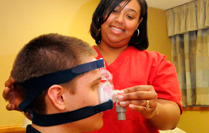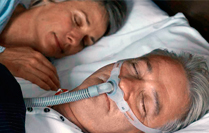Lymphedema has been described as "a plumbing problem." Not exactly medical jargon, but when you consider the role of the lymphatic system and what happens when it gets blocked up, it does seem to fit.
The Lymphatic System
Most of us are familiar with the circulatory system - the veins, arteries and capillaries that move blood to and from all the places in our body. The arteries carry oxygenated blood from the lungs, along with nutrients, to all the cells in the body. They end in capillaries that nourish the tissue. The capillaries then lead to the veins, which return the depleted blood back to the lungs.
The lymph vessels are also an important part of the circulatory system. As the blood flows through the capillaries, it is under pressure. Because of this pressure, fluid and proteins seep out of the arterial side of the capillaries. The tiny lymph capillaries pick up these lost fluids and proteins and transport them through progressively larger lymph vessels. As this "lymph fluid" flows through the lymph vessels, it is filtered through lymph nodes, where white blood cells remove bacteria and other foreign materials. The fluids are then returned to the blood stream. We can think of the lymph vessels as the body's "water system," with "watersheds" where the smaller lymph vessels drain off directionally into bigger collectors, and "purification stations" at the lymph nodes.
Lymphedema
The amount of fluid processed by the lymphatic system is truly huge. At any one time, nearly 90% of the water found in our blood is being filtered through the lymphatic system. In cases of overload, such as injury or infection, healthy lymphatic vessels can absorb up to ten times their usual capacity. But when the lymphatic system is malformed or damaged, blockages can result. The lymphatic fluids from that particular area "serviced" by the blocked channel cannot be transported adequately. Excess fluids build up and produce swelling. In addition, the proteins that leach out of the arterial capillaries build up in this fluid, attracting even more water as the body seeks to maintain its osmotic balance. This causes further swelling. This condition is called lymphedema, and can appear in various parts of the body, but most often affects the arms or legs. The swelling can cause the affected limb to become extremely large and heavy, causing disfigurement and disability. Chronic inflammation causes fibrosis, a hardening of the surrounding tissues, making the drainage process even more difficult. The stagnant lymph fluid also provides ideal growing conditions for bacteria that lead to infection. So people with lymphedema must maintain a strict regimen of skin care, avoiding any wounds or abrasions that might allow entry to bacteria or other pathogens. People with lymphedema must be on guard for systemic infections such as cellulitis that can make them extremely ill.
Causes of lymphedema
Lymphedema can be caused by malformed or inadequate lymphatics - an inborn defect. In keeping with our "plumbing" theme, you can think of a faulty pipe system - not enough pipes, or pipes with the wrong shape or made from the wrong materials. This type of lymphedema is called primary lymphedema.
Primary lymphedema can be evident from birth, when the baby is born with a swollen arm or leg, or it can develop later in adolescence or even in adulthood. Congenital lymphedema appears at birth. Milroy's disease is a familial, or inherited, form of congenital lymphedema. Lymphedema praecox appears before the age of 35, usually during adolescence. Primary lymphedema that appears after the age of 35 is called lymphedema tarda.

Secondary Lymphadema of the Arm
|

Primary lymphedema in 16 year old boy
|
Secondary lymphedema, sometimes called acquired lymphedema, is caused by blockage or disruption of the lymphatic vessels due to disease or trauma.
Examples of secondary lymphedema include those caused by mastectomy surgery and/or radiation (postmastectomy lymphedema); other surgeries, especially cancer surgeries with lymph node removal; tumors pressing or blocking the lymphatic vessels; trauma due to accidents, and occasionally as a result of liposuction surgery. Filariasis, a parasitic infection, is a frequent cause of secondary lymphedema in tropical countries.
Treatment
Left untreated, lymphedema can cause serious complications. So it is extremely important that the patient receive effective and consistent treatment. Surgical methods are usually not recommended except in very specific situations. If lymphedema is caused by parasitic or other infection, medications may be prescribed. But in general, treatment focuses on reducing the accumulation of lymphatic fluid.
The most basic form of treatment consists of increasing pressure on the limb to encourage fluid uptake by the lymphatics. One such method is limb elevation, which utilizes the force of gravity to move fluids out of the limb. Another way to increase pressure on the limb is by wearing medical (prescription)compression stockings, or by applying special bandages. Static compression garments work on the same principle, but can be fastened around the limb at a specific pressure. Both bandages and static garments usually need to be worn many hours at a time.
All forms of stockings, bandaging and static garments can be cumbersome and uncomfortable, especially in hot climates. But they are generally necessary, either as the main treatment or as adjunctive therapy for other treatment methods, and consistent use is important for successful treatment. Compression stockings for both the arms and legs allow freedom of motion to the treated limb, and are cosmetically acceptable.
 Manual Lymph Drainage
Manual Lymph Drainage
Manual Lymph Drainage, also known as MLD, is a specialized form of massage that must be performed by a trained professional therapist. There are various "schools" or techniques of manual lymph drainage. In this treatment method, directional manual pressure is applied to the limb and torso to help drain excess lymphatic fluid. In between treatment sessions, the patient must wear a static compression garment, bandaging or compression stockings to maintain treatment results and keep the fluid from accumulating again.
An advantage of manual lymph drainage is its ability to treat areas inaccessible to pneumatic or static compression: the head and neck, torso, abdomen, etc. The oversight of a trained therapist is extremely important to the patient's health and well-being. However, manual lymph drainage is expensive and requires frequent clinic visits. Often patients find that having to visit a manual lymph drainage therapist on a regular basis is both costly and inconvenient - and sometimes downright impossible. Many manual lymph drainage therapists, aware of this problem, advocate home treatment with Lympha Press® compression therapy systems in between clinic visits or after the allotted clinic visits have been completed, as a way to extend and enhance treatment.
The quality of manual lymph drainage treatment is highly dependent on the expertise of the individual therapist. There are a number of excellent manual lymph drainage clinics, especially in Europe. Some of these clinics even have complete in-patient facilities, where they address the entire spectrum of lymphedema treatment, including exercise, skin care, and psychosocial aspects.
Sequential compression therapy, sometimes referred to as pneumatic compression, or the lymphedema pump, is another method of treatment for moderate to severe lymphedema. A special device sequentially inflates and deflates a garment worn over the affected area, applying directional compression. The pressure and release cycle encourages emptying and refill of the lymphatics, while the directional compression promotes the flow of lymph upward towards the torso and assists the lymphatic fluid in finding its way around the blockage to healthy lymphatic channels. The patient wears a medical compression stocking in between treatments.

Moderate lower limb lymphedema before treatment
|

After 10 days of treatment
|
Meet your Technician
Find a Patient Technician.










 Manual Lymph Drainage
Manual Lymph Drainage